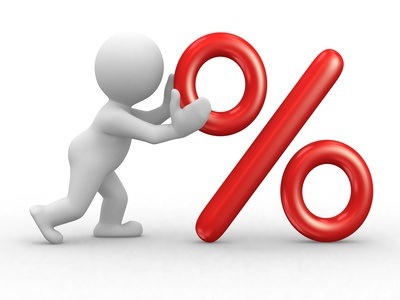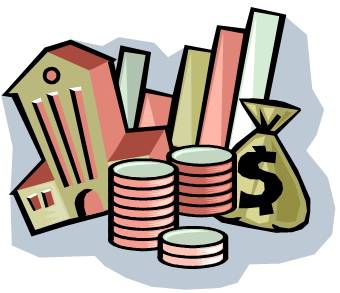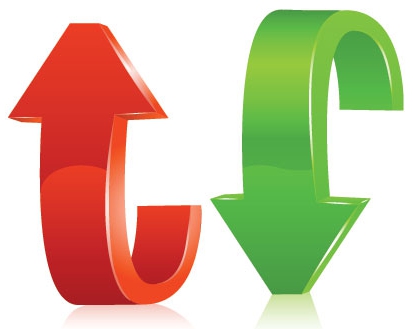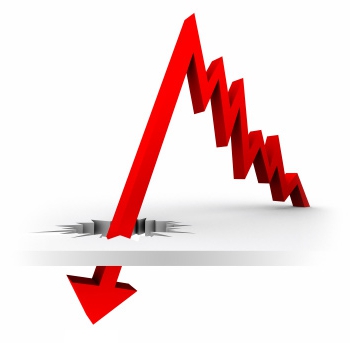From an economic point of view, capital is a means that can be invested in machinery and equipment for the production of products. But not every entrepreneur will have enough money for such investments. Therefore, there is a need for loan capital.
Essence
Redistribution of funds between lenders and borrowers is done by intermediaries. Their role is played by banks and other financial institutions. Their task is to convert inactive funds into loan capital. As borrowers are entrepreneurs, individual consumers. Creditors are firms, the state, and other market participants that have free cash. They give part of their income for use to others and receive a bonus for it.

The concepts
Loan interest is the price that borrowers pay for using capital. Its occurrence is associated with the development of commodity-money relations. Subjects - lender and borrower. The first receives a certain income. The second is trying to increase profits. The clash of their interests leads to the distribution of funds. The essence of loan interest is interpreted in the literature in different ways. Representatives of Marxist theory regard this category as a form of consumer value (utility) of a product. Borrowed capital brings income to the creditor, which is precisely expressed in the rate. According to the theory of marginal utility, the loan interest is a compensation to the lender for refusing to use material goods today in favor of future benefits. Proponents of the theory of net productivity believe that capital should be directed to increase output. The level of this indicator is measured by percentage. In the Soviet period, this term was interpreted according to Marxist theory, under socialism - as a way to reduce the cost of production. Today, the loan interest refers to a certain amount of funds that the owner receives for transferring capital for temporary use to third parties.
Functions
There are two of them:
- Regulatory function: allocation of funds between various industries, enterprises, projects.
- Stimulating: the conversion of free capital into loan capital.
During the transition economy, due to insufficient development of markets, inflation, peculiarities of state regulation and other factors, these functions of loan interest do not fully manifest.
By changing interest rates on loans, the state affects the volume of employment, production and prices. Soft credit policy leads to an increase in investment, tough - holds back market conditions. Loan capital and loan interest stimulate the accumulation of monetary resources.

Formation
All theories regarding the sources of interest are based on the relationship of supply and demand. In the real economy sector, at a constant rate, income is defined as the amount of savings and investment. Under such conditions, those projects will be implemented whose net profit growth will be greater than the level of loan interest. But other factors can also influence the rate. They are considered in several theories.
Classic. The rate of interest depends on the balance of planned savings and investments. If rates are below the balance sheet level, there is an excess of demand for loans. The cost of raising funds increases until the balance is reached.
Neoclassical theory extends the previous one. The flow of demand is equal to the sum of not only savings, but also an increase in the money supply.The production needs and the needs of people who are eager to get a lot of cash are taken into account.

Keynesian theory. The rate of loan interest is calculated as a fee for reducing liquidity. A new influence factor is introduced - the amount of money in circulation. The change in the rate is directly proportional to the liquidity level and inversely proportional to the amount of funds. In turn, the first indicator is affected by the amount of money needed to finance current costs, cash reserve. Speculative risk stands out separately. At high rates, the volume of funds in circulation will decrease; people will buy securities in order to receive income in the form of interest now and after their sale.
Factors
In a market economy, the loan interest rate depends on such macroeconomic indicators:
- current level of capital accumulation and savings;
- the ratio of supply and demand for loans;
- development of financial markets;
- state of national currencies;
- risk level;
- balance of payments status;
- monetary policy of the state;
- inflation
- tax systems.
The greatest influence is exerted by inflationary processes. In theory, if market prices do not rise, the real and nominal rates coincide. In practice, inflation occurs. If the nominal rate rises more slowly than the price level, a negative real rate is formed, which is levied on the depositor.

The mechanism of interest formation can be represented as follows:
I = R + E + RP + LP + MP,
Where:
- R is the real rate on “risk-free” operations;
- E is the level of inflation expectations;
- RP - borrower creditworthiness (premium for default risk); it can be defined as the difference between the rates on debt instruments with different ratings;
- LP - compensation for the possible risk of loss of liquidity;
- MP - remuneration for the entire service life of the obligation.
Types of Loan Interest
A fixed rate is set once for the entire period of use of funds. The floating percentage consists of a fixed value and a part that changes with the market situation. Depending on the type of loan, the term and amount of the loan, the financial condition of the borrower, the level of risk, the quality of the loan security, the degree of competition, the loan interest is divided into bank, the rate on corporate, treasury securities, bills, government bonds etc.

Official rate
As the country's main monetary institution, the Central Bank sets the percentage at which securities are re-listed (discounting) and loans are issued by the bank. Discount rate higher discount. But in Russia there is no such division. The loan interest rate is set at the same level for the operations of discounting and refinancing.
Bank interest
This is the most developed form of loan rate. When calculating the credit rate, the basic interest and risk premium are taken into account, which depends on the financial condition of the borrower, the availability of collateral, the term of the loan, the credit history of the client, the cost of loan capital, the purpose of the loan, the nature of the collateral, etc. The Bank provides borrowed funds for the loan Therefore, the commission should take into account the risk of default on debt.
The level of interest on passive operations depends on the amount of resources attracted, the reliability of the bank, and relations with the client. Deposit rates below credit. Due to the difference, the profit of the bank is formed. It is also called spread or margin. It is affected by the composition of credit investments, sources of their formation, terms of payments, change in rates.

To effectively manage revenue, you need to calculate a kind of break-even point - the minimum margin:
Mmin = (RB - Dp) / Hell x 100%,
Where:
- RB - the sum of the costs of ensuring the functioning of the institution;
- DP - other income of the bank (reimbursement of the cost of communication services, commissions received in previous years, demanded interest);
- Hell - acquired by the Central Bank and other income-generating assets.
Interbank rates
These are lending rates on the credit market, where commercial banks gain access to resources. The most popular is LIBOR (London Interbank Offer Rate) - this is a scale used by institutions, issuing bonds on the Euro-currency market for different periods (from 1 to 12 months). Since there is no official norm, each bank sets and changes the rate on its own, depending on the average value of the indicator. LIBOR is used as the basis for calculating the cost of loans at a floating rate.
LIBID - the average loan percentage when buying interbank loans. In the Russian market, loans are provided on an overnight basis. At the same time, the following average interbank rates apply:
- MIBOR - placement of loans.
- MIBID - attract loans loans.
- INSTAR is a complex loan interest calculated on real transactions.
Gap analysis
When banks carry out interest rate policies, risks are reviewed. All assets and liabilities are divided into four categories depending on the speed of transition to a new level:
- A - full revision of rates in case of changing market conditions.
- B - regulation is carried out within 3 months.
- C - rates are reviewed more often than once a quarter.
- D - fully funded rates.
In the period of interest growth, the number of assets of groups A and B should exceed the corresponding amount of liabilities.

RZB
The relationship between the terms "loan capital" and "loan interest" is clearly visible on the example securities market. The rate level plays an important role in deciding on an investment. Entrepreneurs will inject capital only if the estimated amount of income is not lower than the market rate.
Stock - a security that indicates that the holder has paid a certain amount to the authorized capital of the enterprise and gives the right to receive part of the profit. It is characterized by two indicators: market and face value. The first is the purchase price, and the second is the amount of money indicated in the document.
Stock price = dividends /% rate × 100%.
The owners of ordinary shares participate in the meeting of shareholders, make a profit depending on the financial results of the company. Preferred securities do not give voting rights, but guarantee the priority payment of a part of the income in the form of a fixed percentage. Registered shares may be transferred to third parties only with the permission of management. Bearer shares do not contain the name of the holder in the text of the document. Full control over the organization has the owner of a controlling stake.
Bond - a debt obligation under which the borrower (organization) undertakes to pay the lender the face value and annual income in the form of interest. There are short-term (up to 3 years), medium-term (up to 7 years), long-term (more than 7 years) and unlimited securities. After the time, the owner returns the initial investment and interest (up to 14%). A bond holder is a creditor of an organization, but does not have a voting right at a meeting of shareholders.
Option - paper giving the right to purchase or sell securities at a specified price for a certain time.
Futures contracts fasten the contract for the supply of the agreed amount of valuables by the specified date.
There are also other types of securities that are not traded on the market but generate income.
Bill of exchange - This is a written obligation that certifies the owner's indisputable right to demand payment of money after a certain period of time from the drawer. Its main property is reversibility. The bill can serve an unlimited number of persons and at the same time serve as cash.
Certificates of deposit - The Central Bank, indicating the deposit of funds into the bank on certain conditions. They pay income in the form of interest, the amount of which depends on the term of deposits.
Conclusion
Sooner or later, economic entities need to borrowed funds. You can attract them not only through banks, but also through the securities market. Funds are provided for a specified period for a fee. The role of loan interest is revealed in its functions. Capital from the usual turns into borrowed, begins to bring income to its owner. Funds are distributed between sectors of the economy depending on the needs of market entities.








